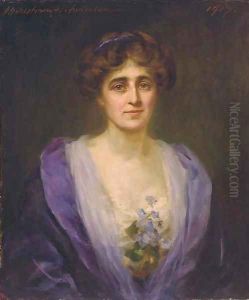John Singer Sargeant Paintings
John Singer Sargent was an American expatriate artist, considered the 'leading portrait painter of his generation' for his evocations of Edwardian era luxury. He was born on January 12, 1856, in Florence, Italy, to American parents. He was a descendant of a New England family of merchants and shipowners. His childhood was spent traveling throughout Europe, a factor that would influence his cosmopolitan sensibility and artistic education. Sargent showed early artistic talent and was enrolled in the Accademia di Belle Arti in Florence at the age of twelve.
After a brief period of study in Italy, Sargent was sent to Paris in 1874 to study with Emile Auguste Carolus-Duran, a fashionable portraitist of the Parisian elite. Sargent quickly absorbed his teacher's technique and philosophy of 'direct painting', which emphasized immediate, bravura brushwork and a close observation of light effects. In 1879, Sargent's portrait of Carolus-Duran was an homage to his mentor and a showcase of his own skill, earning him praise and recognition.
Sargent's career in Paris was initially marred by controversy; his 'Madame X' (Madame Pierre Gautreau) created a scandal at the 1884 Paris Salon due to its provocative styling and perceived sexual suggestiveness. This setback prompted Sargent to move to London, where his career flourished. He became the most sought-after portraitist of wealthy patrons in England and the United States, admired for his ability to capture the character and opulence of his subjects.
Beyond portraiture, Sargent also painted landscapes, still lifes, and murals. He traveled extensively, finding inspiration in Venice's canals, the Alps' rugged mountains, and the exotic locales of the Middle East and North Africa. His works from these travels, often executed in watercolors, demonstrated his versatility and keen observational eye.
Sargent's later years saw a shift away from portraiture as he focused on murals and public commissions, including those for the Boston Public Library and the Museum of Fine Arts, Boston. Despite his success, he expressed a degree of ambivalence about the constraints of portraiture, longing for the freedom to paint more personal subjects.
John Singer Sargent passed away on April 14, 1925, in London. His legacy includes a vast body of work that is celebrated for its technical prowess, elegance, and the unique ability to capture an era through its most notable figures. He is often remembered as the last great representative of the Gilded Age and is widely regarded as one of the greatest portrait artists of all time.
